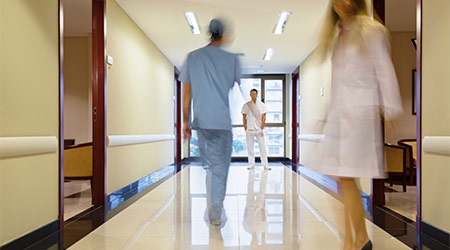No area of healthcare facilities has been off limits when it comes to locating potential sources of infection related to the COVID-19 pandemic. Traditional high-touch surfaces — door handles, light switches, hand rails, etc. — are among the most closely inspected surfaces as potential sources of pathogen transmission for certain environmentally transmissible pathogens. One component of facilities, however, is often overlooked.
Floors generally are not considered to contribute to the risk of pathogen dissemination in a similar manner nor the associated infection risk, according to Infection Control Today. As a result, floor hygiene is considered a relatively low priority for managers assessing the risk of transmission of pathogens.
But research in the last decade is shaping a clearer picture of the way floors act as a reservoir for pathogens and might contribute to infection risk. Managers need to review the evidence on floors and the way they might play a role as a reservoir in the chain of infection.

 How Efficiency Checklists Help Hospitals Save Energy, Water and Money
How Efficiency Checklists Help Hospitals Save Energy, Water and Money Designing with Heart: Seen Health Center Blends Cultural Warmth and Clinical Care
Designing with Heart: Seen Health Center Blends Cultural Warmth and Clinical Care Rutgers Health and University Hospital Breaks Ground on Campus Expansion
Rutgers Health and University Hospital Breaks Ground on Campus Expansion What to Consider When Modernizing Healthcare Facilities
What to Consider When Modernizing Healthcare Facilities Corewell Health Beaumont Troy Hospital to Build New Tower
Corewell Health Beaumont Troy Hospital to Build New Tower